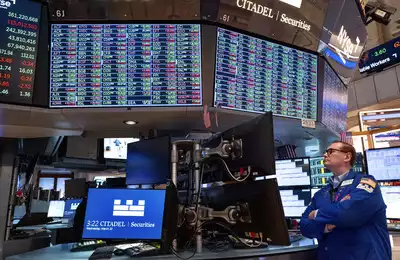Before the Easter break, the S&P 500 has its best first quarter since 2019
The S&P 500 and the Dow Jones Industrial Average reached all-time highs in New York on Thursday, a noteworthy lead-up to the Easter holiday break and a testament to their remarkable resiliency. In addition to breaking records, this surge indicated that the S&P 500 was off to its greatest start in the year since the commencement of the COVID-19 epidemic.

The Dow Jones is getting closer to the 40,000 mark.
With a 0.1 percent gain, the Dow Jones Industrial Average completed the day at 39,807.37, setting a new record and getting closer to the coveted 40,000-point milestone.
This gradual increase is a reflection of both investors’ rising confidence in the economic outlook and the market’s consistent upward trend.
S&P 500 sets a new high as the Nasdaq slightly declines
Similar to the Dow’s upward trend, the S&P 500 had a 0.1 percent increase, setting a new high at 5,244.35. But the tech-heavy Nasdaq Composite Index closed at 16,379.46, down 0.1 percent from its opening value. This is a “broadening out” of the market advance, according to Art Hogan of B. Riley Financial, going beyond the tech sector that has historically led gains.
Mixed outcomes are seen in European markets.
While traders awaited new US inflation data, European stock markets performed differently on the other side of the Atlantic. The London market hit a one-year high, Frankfurt witnessed slight increases, and Paris saw little change. The expectation of these numbers coincides with persistent fears about inflation that continue to influence mood on the world market.
Asian markets react to speculative interest rate moves by the Federal Reserve.
Following remarks made by Christopher Waller, the governor of the Federal Reserve, which suggested a potential postponement or scaling down of US interest rate decreases, Asian markets finished with mixed outcomes. The dollar gained strength in relation to other currencies as a result of this remark, and the yen stabilised after falling to a 34-year low versus the dollar.
Concerns over supplies are driving up oil prices.
The dynamics of the market were further complicated by an increase in oil prices of about 1.5 percent. This surge highlights the intricate relationship between commodities markets and other economic indicators. It is attributed to persistent concerns about possible supply shortages.
observing the Fed’s next actions
Investors are still upbeat but cautious, and all eyes are on the central bank’s next interest rate decisions. Even if inflation seems to be slowing down, the Federal Reserve, the European Central Bank, and the Bank of England nonetheless consider inflation when determining interest rates. The personal consumption expenditures (PCE) index is about to be released, and this might give further information on inflation patterns and the path of monetary policy.
The winning run on Wall Street continues.
The market’s resiliency is shown by the main indexes’ record highs and continuous growth as Wall Street closes off another prosperous quarter. This success story is supported by the robust US economy, encouraging indications of declining inflation, and anticipations of further Federal Reserve rate reduction. As the stock market closes off its fifth straight month of gains, the scene seems to be set for what many believe will be a long-term upswing in the coming months.






